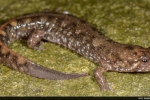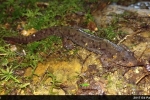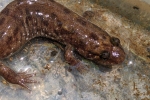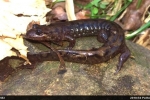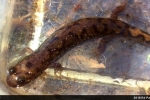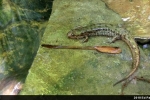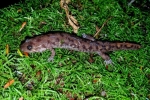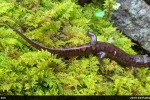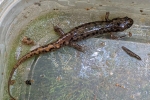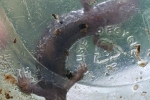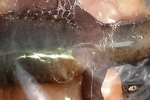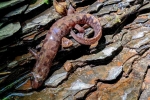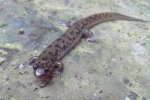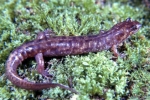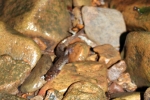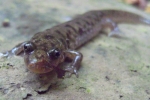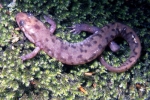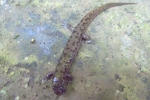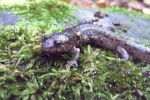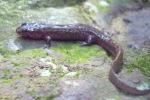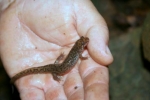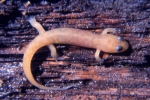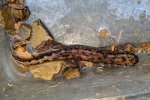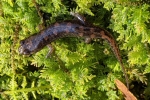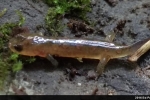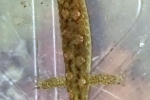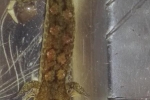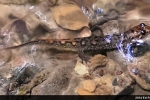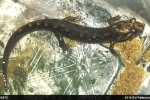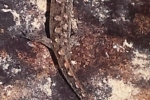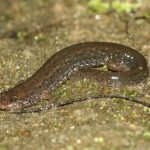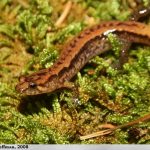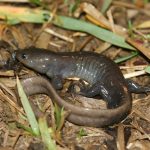Seal Salamander
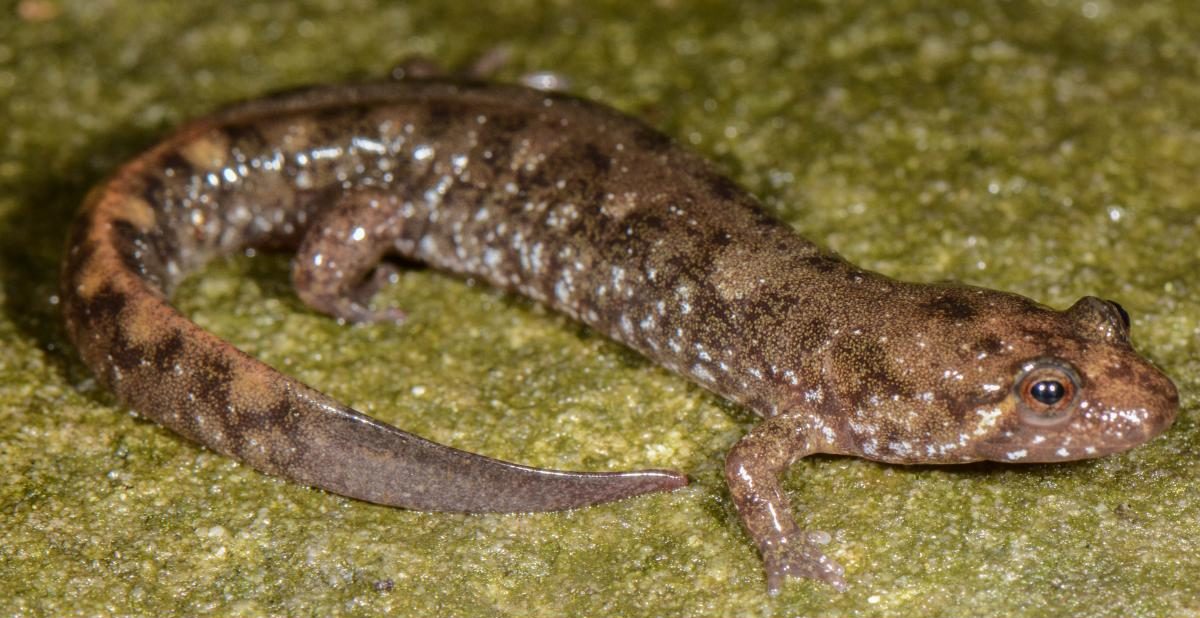
Scientific Name: Desmognathus monticola
Size: 3-5 inches (8-12.5 cm) in length
Status: Abundant
Habitat:
Close to or in small to medium-sized mountain streams.
Description:
Medium-sized heavy bodied species. The background color is light brown to grayish with reticulated, mottled, or wormy dark brown to black markings. In some individuals these markings maybe absent or reduced. The sides of the body are mottled and often have a single line of white spots between the forelimbs and hind legs. The underside, chin and underside of the appendages are white to light grey. Melanophores on the venter are uniformly spaced so that the ventral lacks mottling. The head is mottles with brown or black. The toe tips are black and are darker than the other part of the toes. The tail is strongly compressed laterally with a sharp well defined knife-like dorsal keel. Salamander in the Desmognathus genus are easily identified by the light line that extends from the eye to the angel of the jaw.
- The dorsal background color us light brown to greyish with reticulated, mottled, or wormy dark brown to black markings. In some individuals these markings maybe absent or reduced.
- The sides of the body are mottled and often have a single line of white spots between the forelimbs and hindlegs.
- The ventral, chin and underside of the appendages are white to light grey. Melanophores on the venter are uniformly spaced so that the ventral lacks mottling.
- A light line that extends from the eye to the angel of the jaw.
- The head is mottles with brown or black.
- The toe tips are black and are darker than the other part of the toes.
- Medium-sized heavy bodied species.
- The tail is strongly compressed laterally with a sharp well defined knife-like dorsal keel.
- The head is large and bluntly rounded.
- The gular fold is distinct.
- The temporal and mastoid regions of the head are hypertrophied.
- 14 costal grooves
- The dorsal has 4-5 pairs of brown spots that become fused and darker with age.
- The dorsal background is dark and has 4-5 pairs of orange to reddish orange staggered spots between the forelimbs and hind legs.
- Older larvae start to develop black cornifications on the tips of the toes.


References:
- Hulse, C. and McCoy C. J. and Ellen Censky ,1998. Amphibians and Reptiles of Pennsylvania and the Northeast. 79-81pp.
- Petranka, James W. ,1998. Salamanders of the United States and Canada. 187-192pp.
- Jason Poston
- John Smith
- Tom Diez
- Ed Patterson
- Chris Bortz
Heads up!
Please contribute your observation of this and other herps to the Pennsylvania Amphibian and Reptile Survey. Your help is needed.
